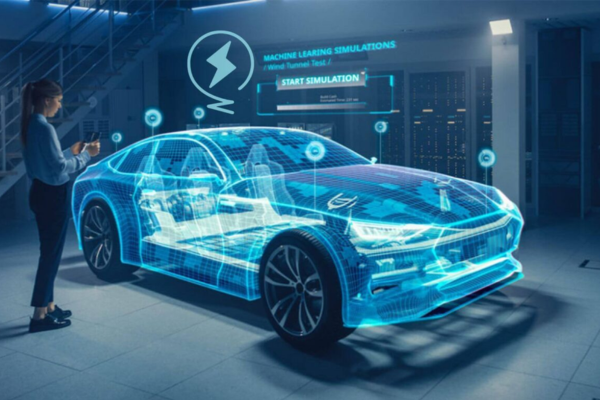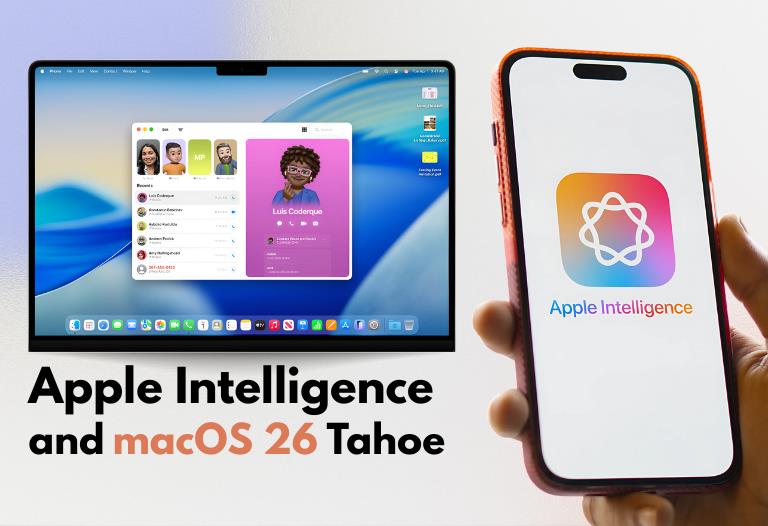
Modern life cannot exist without transportation, but the conventional combustion engine is rapidly becoming antiquated. Vehicles powered by petrol or diesel emit pollution, and fully electric vehicles are rapidly taking their place. Fully electric vehicles (EVs) are significantly better for the environment and have no exhaust emissions. That the reason Energy Management System in Electric Vehicle in now a Vital thing in the new automobile era.
An electric vehicle has substantially lower operating costs than petrol or diesel vehicles. Instead of utilizing fossil fuels like gasoline or diesel to charge their batteries, electric vehicles use electricity. Because electric vehicles are more energy-efficient and power is more expensive, charging an electric car is more affordable than filling it up with diesel or petrol for your needs.
Role of Software in EVs
Software has a major impact on the entire performance and operation of electric cars (EVs). How they are built and run is greatly influenced by the growth observed. To control power, charge, and discharge batteries, run motors, apply regenerative braking, and control overall vehicle motion, electric vehicles (EVs) primarily rely on complex software systems. These software programs enable safer, quicker, and more energy-efficient processes. Furthermore, advanced features like lane-keeping assistance, adaptive cruise control, autonomous driving, and regenerative braking are commonly included with EVs. Complex software algorithms greatly influence all these attributes.
By enabling over-the-air upgrades, remote diagnostics, and data analytics, the software also aids in connectivity. This enables ongoing customization and improvement of the vehicle’s functionality and performance. To put it succinctly, the software is the most crucial component of EVs because it ensures their safe and effective operation and allows the area of electric mobility to continuously evolve.
Understanding Energy Management System in Electric Vehicle.
To put it in simple words, Smart Energy Management is a kind of load balancer or power optimization solution for EV charging infrastructures. But, the way it operates is far from straightforward. It is made possible by a centralized cloud-based management platform that balances the following:
- a dynamic electrical grid and renewable sources; and automatically adjusts charging loads based on demand using an innovative algorithm.
- Costs associated with dynamic energy
- Policies that are already set
- Regulatory requirements for owners of electric vehicles
The smart electric vehicle energy management system guarantees that the right quantity of energy reaches the right power consumer at the right time and at the right cost for operators of EV charging infrastructure.
Since increasing the capacity of power generation is relatively expensive and power consumption varies during peak hours, electricity suppliers employ incentives to encourage customers to balance their demands. They can achieve this by charging customers who agree to cut back on their consumption during hours of the day, or by lowering costs during certain hours of the day. The market for energy flexibility is what is called this. During periods of high demand, smart energy management technologies automatically minimize energy going to electric vehicles while balancing the day’s energy consumption.
An electric vehicle’s Energy Management System (EMS) is an essential part that maintains the car functioning properly. Its three primary parts are power distribution, charging systems, and battery management systems.
Battery management systems ensure maximum performance and longevity by controlling temperature, charge level, and battery condition. Charging systems use the power grid to regulate the charging process to preserve compatibility and safety.
Power distribution systems guarantee efficient power use by managing the electricity’s transfer from the battery to the electric motor. An EV can operate smoothly thanks to the cooperation of these parts.
Challenges in Energy Management System in Electric Vehicle.
Range Anxiety
Range anxiety is one of the most commonly mentioned issues with EV adoption. This is the worry that an electric vehicle will not have enough charge to drive. It is also evident that range anxiety may exist for example in the US, there is only 46,000 EV charging facilities against 150,000 petrol outlets. The mismatch between EV charging infrastructure and available electrical capacity is the main cause of range anxiety.
Charging Infrastructure:
The dearth of public charging stations is one of the biggest issues with the infrastructure for EV charging. Because they might not locate a charging station when needed, EV owners may have range anxiety as a result. Additionally, quicker charging times are required because the length of the present charging periods may discourage some drivers from choosing electric vehicles
The infrastructure expense of EV charging is another difficulty. The cost of improving the electrical grid and constructing charge stations may prevent EVs from being widely adopted. Additionally, the infrastructure for EV charging needs to be standardized because drivers may find it confusing to use different kinds of chargers and connectors, which could discourage them from utilizing public charging stations.
Energy Optimization in Energy Management System in Electric Vehicle.
There are various reasons why it is essential to maximize energy and efficiency in electric cars. The vehicle’s range is directly impacted. Hence, it is a major worry for EV drivers. Range anxiety is reduced and EVs offer a more practical driving experience by maximizing energy efficiency, which enables them to drive farther between charges.
Opportunities
The development of an infrastructure for EV charging has opportunities despite its difficulties. One way to boost employment and the economy is by expanding the infrastructure for EV charging.
EV owners may profit monetarily by optimizing energy use. Over time, electric vehicles are more economical to operate thanks to increased efficiency, which also results in lower charging expenses.
The Role of Software Development
Dynamic Battery Management optimizes a battery’s charging and discharging cycles to extend its lifespan through software algorithms. By keeping an eye on the voltage, current, and temperature of the battery, these algorithms monitor its present condition and modify the charging procedure as necessary.
Predictive analytics uses data, machine learning methods, and statistical algorithms that estimate the possibility of future events based on historical data. Energy forecasting and route optimization for electric vehicle scenarios can be achieved through its application.
Smart charging solutions are software-based solutions that enable advanced charging strategies based on energy demand and cost fluctuations. These solutions use real-time data to adjust the charging rate, ensuring that the vehicle is charged when energy demand is low and prices are lower.
Innovations in Software for EV EMS
Software can perform better thanks to machine learning, a kind of artificial intelligence that uses data. By analyzing driving behaviors, machine learning can improve energy management in the context of electric vehicle energy management (EV EMS).
Machine learning algorithms, for instance, can examine data from a car’s accelerometer, GPS, and other sensors to determine how the driver usually operates the vehicle. Additionally, it makes more customized energy management possible. The system can provide lifestyle-specific advice by gaining insight into each driver’s distinct habits.
The network of physical objects, including cars, appliances, and other household equipment, that have sensors, software, and network connectivity integrated into them is known as the Internet of Things, or IoT.
IoT integration in the context of electric vehicles can establish a networked ecosystem that facilitates more effective energy management. IoT-capable gadgets, for example, can gather data from the car’s battery, charger, and other parts. This information can be used to track the operation of the car, spot possible problems, and even anticipate when maintenance is required.
For customers to effortlessly monitor and regulate their energy consumption, user-friendly interfaces are essential. These interfaces can offer real-time information on the vehicle’s battery condition, estimated range, and energy use in the context of EV EMS.
In summary, EV EMS can greatly improve energy management and increase the efficiency, convenience, and sustainability of electric vehicles by integrating machine learning, IoT, and user-friendly interfaces.
Examining how range optimization and effective energy use are facilitated by Tesla’s Energy Management software.
To support its energy hardware offerings, Tesla has created a sophisticated software ecosystem. Utilizing more than 15 years of experience in battery performance technology, Tesla has customized its software for energy products and enhanced performance by managing gigawatts of sites across more than 65 nations.
The whole ecosystem of Tesla products, from virtual power plants, made up of thousands of Powerwalls to the company’s largest storage product, Megapack, is powered by a single software platform. In addition to energy storage, solar power, car charging, and non-Tesla equipment needed to run utility-scale power plants and microgrids are all supported by Tesla software.
To optimize economic value, energy asset dispatch is automated by Tesla’s Autonomous Control algorithms. Today’s top-performing Autonomous Control products for customers include Microgrid Controller, Opticaster, and Autobidder. Additionally, Tesla has created software with capabilities like Virtual Machine Mode to allow for more renewable energy to be produced on the grid.
Advantages of Software for Tesla Energy
Tesla is the only integrated energy storage provider in the world. Industry-leading performance, dependability, and over-the-air upgrades to bring ongoing enhancements and new features over time are made possible by the unique seamless integration of hardware, firmware, and software.
The energy products’ value is maximized by Tesla software, which also allows to successfully serve a wide range of clients, such as:
- Managers of C&I fleets;
- Developers of projects (microgrids, commercial solar);
- Aggregators; operators of power plants;
- Utilities;
- Independent power producers;
- Traders in the energy market
Energy Efficiency
Tesla vehicles are made with an extremely energy-efficient design that uses a large percentage of the electrical energy stored in their batteries for propulsion. This efficiency reduces overall energy consumption and its impact on the environment by translating into more miles per kilowatt-hour (kWh) of electricity.
How the Tesla is charged also affects how much electricity is used. Level 2 chargers are commonly used for home charging, which is an economical and practical approach. These chargers are easy to install at home and enable Tesla owners to charge their cars at a reduced electricity rate over night, guaranteeing that their cars are ready for use every day.
Future Trends
Integration of Autonomous Vehicles and Energy Management: The use of autonomous vehicles, or AVs, is going to change transportation forever. They can raise transportation’s level of efficiency, accessibility, and safety. Energy management is one of the main issues AVs have to deal with, though.
Since electric vehicles are anticipated to be the norm, autonomous cars will require battery power. To increase range and reduce the need for recharging, an AV’s energy management system must make sure the battery is used effectively. This can entail maximizing the car’s braking, speed, and other operational aspects.
Blockchain Solutions for the Ecosystem of Electric Vehicles (EVs)
Blockchain technology has the potential to be very important to the EV ecosystem. It could be applied to guarantee transparency, preserve records, and secure transactions.
Blockchain can be used, for example, to establish a decentralized market for EV charging stations. EV owners would be able to use this to compare costs, locate the closest charging station, and safely complete transactions.
Regular Software Updates
The software that drives technology needs to keep evolving along with it. This is particularly true for the automobile sector, as it takes constant software changes to adjust to changing customer demands.
For example, software upgrades will be required as autonomous vehicle (AV) technology advances to enhance the vehicle’s operation, safety, and performance. It is possible to fix errors, improve existing features, or add new ones with these upgrades.
These are just a handful of the upcoming trends we should be aware of in the upcoming years. We anticipate seeing many more fascinating advancements in software upgrades, blockchain, and autonomous driving as technology continues to advance.
Conclusion
The future of Electric Vehicle Energy Management Systems (EVEMS) is significantly shaped by software development. Optimizing power management to maximize energy efficiency is the main goal of software development for electric vehicles. To do this, software systems that regulate and govern several facets of an electric vehicle’s operation, such as the vehicle’s energy use and charging habits, are developed.




 March 4, 2024
March 4, 2024










